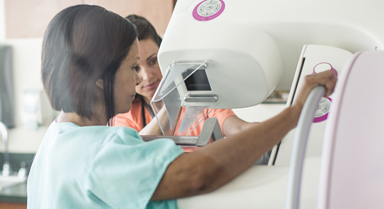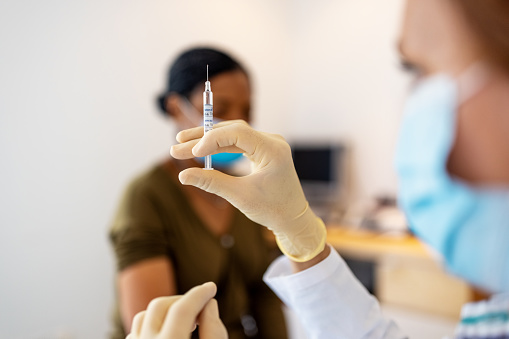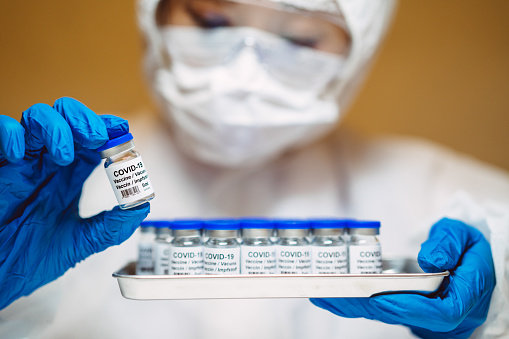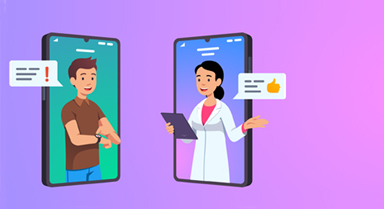What is ovarian cancer?
Ovarian cancer is the abnormal growth of cells in or near your ovaries. The ovaries are two small glands, located on either side of your uterus. They produce female sex hormones and store and release eggs. Ovarian cancer can occur in anyone who has female pelvic organs, even people who don't identify as female.
Ovarian cancer facts:
- Ovarian cancer is the seventh most common cancer in women; there were 314,000 new cases in 2020 globally1
- A Pap test (cervical smear test) does not detect ovarian cancer2
- A woman's risk of getting ovarian cancer during her lifetime is about 1 in 783
What causes ovarian cancer?
Experts don't know exactly what causes ovarian cancer. Genetics, such as DNA changes, are a risk factor for a small number of those who get ovarian cancer. For example, the risk of ovarian cancer is higher for those who have BRCA1 or BRCA2 gene changes than for those without them.4
What are the symptoms?
In some cases, ovarian cancer may cause early symptoms. The most common symptoms of ovarian cancer include:
- Frequent bloating
- Pain in your belly or pelvis
- Trouble eating, or feeling full quickly
- Urinary problems, such as an urgent need to urinate or urinating more often than usual
These symptoms are common for some people. They may not mean that you have ovarian cancer. But the early symptoms of ovarian cancer follow a pattern:
- They start suddenly
- They feel different than your normal digestive or menstrual problems
- They happen almost every day and don't go away
Other symptoms of ovarian cancer include:
- Fatigue
- Indigestion
- Back pain
- Pain with intercourse
- Constipation
- Menstrual cycle changes
But these symptoms are also common in some people who don't have ovarian cancer.4
If you have one or more of these symptoms, consult a health care provider about your possible risk of ovarian cancer and any testing you should consider.
What Increases Your Risk
In most cases, the risk of getting ovarian cancer is small. But the things that put you at risk for ovarian cancer are having:
- A family history of ovarian cancer. Having a close relative (like a mother or sister) who had ovarian cancer or certain other cancers raises your risk. And you are at even higher risk if you have two close relatives with cancer.
- Inherited gene changes. A small number of people with a family history of cancer have inherited gene changes. Having certain gene changes, such as BRCA changes, can put you at a higher risk for ovarian cancer.
Other things that put you at risk include:
- Being older, ovarian cancer most often happens after menopause
- Never having had a baby
- Having started periods before age 12 and going through menopause after age 52
- Having endometriosis
Most people who get ovarian cancer don't have any of these risk factors.4
How is it diagnosed?
Your doctor may check you for ovarian cancer if a lump is found on an ovary during a pelvic exam or an ultrasound. You will likely also get a physical exam. You will be asked about any symptoms, your medical history, and your family's history of cancer. You may also get some tests such as lab tests and imaging tests, such as an ultrasound or a CT scan.
If these tests show signs of cancer, your provider may recommend a biopsy. This involves surgery to remove an ovary. Tissue from the ovary will be looked at under a microscope to see if it has cancer cells.4
How is ovarian cancer treated?
Treatment for ovarian cancer is based on the stage of the cancer and other things, such as your overall health. The main treatment is surgery to remove the cancer. Other treatment options may include chemotherapy, targeted therapy, immunotherapy and endocrine therapy.4
If you have questions about ovarian cancer or any other type of cancer, contact your health care provider for advice and support.
1. World Ovarian Cancer Coalition, Ovarian Cancer Key Stats. https://worldovariancancercoalition.org/about-ovarian-cancer/key-stats/. Accessed June 27, 2022.
2. World Ovarian Cancer Coalition, FIVE FACTS OF OVARIAN CANCER. https://worldovariancancercoalition.org/about-ovarian-cancer/five-facts/. Accessed June 27, 2022.
3. American Cancer Society, Key Statistics for Ovarian Cancer. https://www.cancer.org/cancer/ovarian-cancer/about/key-statistics.html#:~:text=Ovarian%20cancer%20ranks%20fifth%20in,is%20about%201%20in%20108. Accessed June 27, 2022.
4. Cigna. Ovarian Cancer. https://www.cigna.com/knowledge-center/hw/medical-topics/ovarian-cancer-tw9687. Accessed August 8, 2022.
This article serves only as a reference and is intended for informational purposes only. Nothing in this article constitutes legal, tax, financial planning, health or medical advice including diagnosis or treatment. Always seek the advice of your physician or other qualified health provider with any questions you may have regarding a medical condition. References to third-party organizations or companies, and/or their products, processes or services, do not constitute an endorsement or warranty thereof. Products and services may not be available in all jurisdictions and are expressly excluded where prohibited by applicable law. All group insurance policies and health benefit plans contain exclusions and limitations. For costs and details of coverage, contact a Cigna representative.
All Cigna products and services are provided exclusively by or through operating subsidiaries of Cigna Corporation, including Cigna Health and Life Insurance Company, Life Insurance Company of North America, Cigna Global Insurance Company Limited, Evernorth Care Solutions, Inc. and Evernorth Behavioral Health, Inc., or through their affiliates and contracted companies.
In the U.S., Cigna Global Health Benefits® group medical and dental plans are insured or administered by Cigna Health and Life Insurance Company. In the U.S. and Canada, group life, accident and disability plans are insured or administered by Life Insurance Company of North America. In Canada, group medical, dental, vision, and evacuation plans are insured or administered by Cigna Life Insurance Company of Canada. Employee Assistance Programs are administered by or through Evernorth Care Solutions, Inc., Evernorth Behavioral Health Inc., Inc. or affiliates and contracted companies. In other jurisdictions, products and services are offered by or through Cigna Global Insurance Company Ltd. or affiliates and contracted companies. Products and services may not be available in all jurisdictions and are expressly excluded where prohibited by applicable law. The information on this site is only a general description of benefits. All insurance policies and group benefit plans contain exclusions and limitations. Please consult your licensed agent or contact Cigna for product availability, costs, and complete details of coverage.









































































































